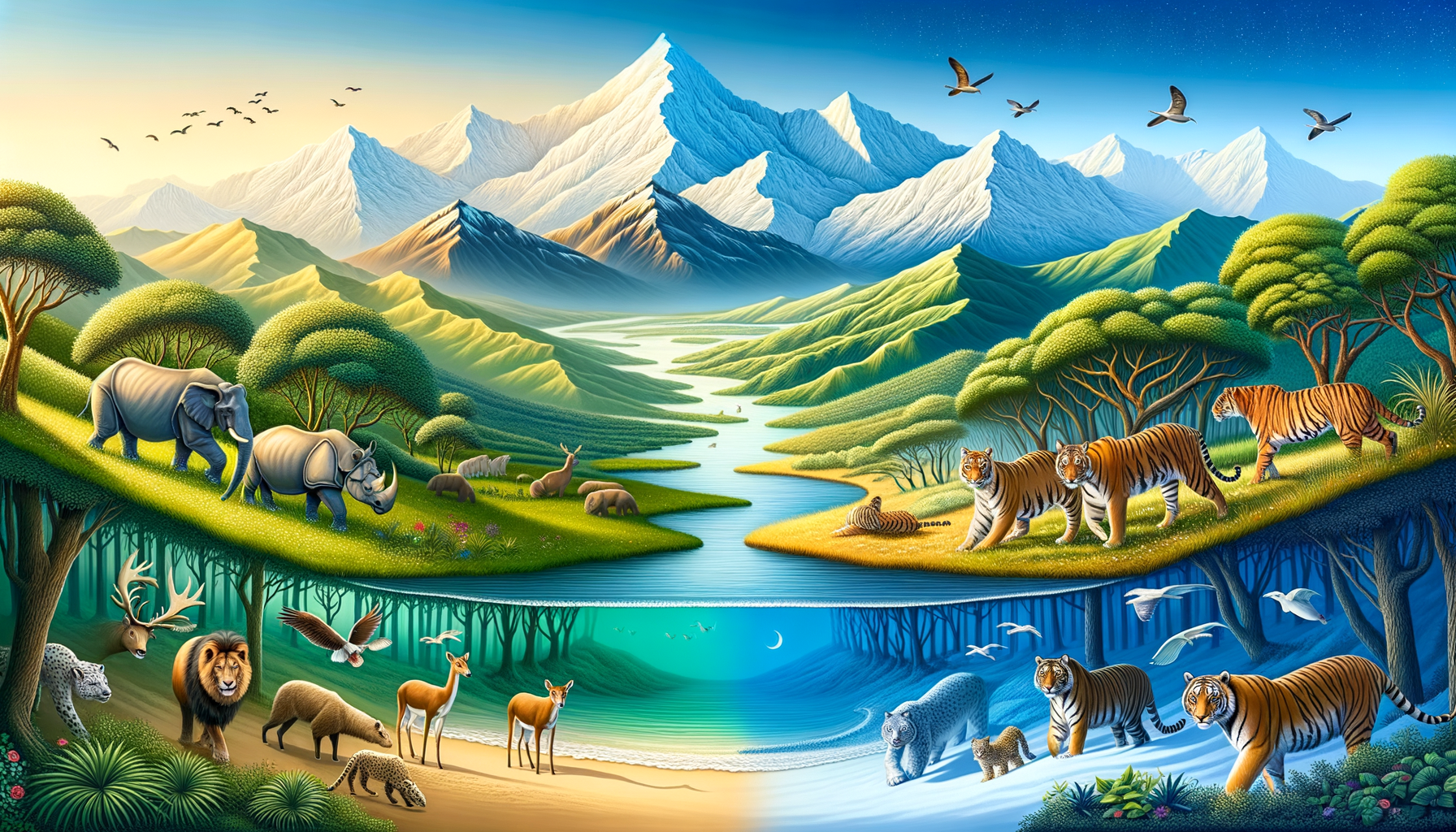Discovering Harmony: The Impact of India's Geographic Location on its Biodiversity
Discover how India's unique geographic position influences its rich biodiversity, mirroring the adaptation and resilience seen in life's journey.

Introduction: A Journey Begins
There’s a remarkable synchronicity that comes to mind when I think about India’s geographic location and its astounding biodiversity. It reminds me of how life often plants us in specific places for reasons we might not immediately understand. India, with its distinct position between the towering Himalayas and the expansive Indian Ocean, isn’t just a landmass; it's a testament to the intricate tapestries woven by nature over millennia. Our life journeys, too, often find parallel patterns and reasons that unfold with time.
Geographic Marvels and Nature's Masterpiece
India’s location is nothing short of a geographical marvel. Imagine, if you will, a colossal canvas where nature has painted mountains, plains, deserts, and forests. This diversity in terrain has given rise to an equally diverse array of flora and fauna. The Himalayas in the north are like protective parents, shielding the subcontinent from cold northern winds and creating a fertile cradle for life to flourish. In contrast, the vast coastline along the Indian Ocean is a gateway that brings warmth, moisture, and exotic species from distant lands. This unique combination shapes an environment where life finds creative ways to thrive.
The Diverse Symphony of Life
Walking through India’s varied landscapes—be it the lush Western Ghats teeming with endemic species or the Sundarbans with its enigmatic tigers—Is akin to witnessing a grand symphony. Each region has its own rhythm, yet together, they compose a harmonious tribute to biodiversity. Just like in life, where our different experiences and trials come together to form a cohesive whole, India’s ecosystems resonate with resilience and adaptation.
One can't help but draw personal parallels here. Have you ever found yourself in a challenging situation, only to realize it was preparing you for something greater? India’s biomes reflect this perfectly. The Thar Desert’s harsh conditions might seem inhospitable, yet it's home to unique species that have adapted wonderfully. Our struggles often mold us, just as the environment shapes its inhabitants.
Lessons From Nature: Embracing Diversity
On a recent trip to the Western Ghats, I was awestruck by the variety of species coexisting in a single habitat. This rich biodiversity is a mirror reflecting our own societal dynamics, reminding us of the strength found in diversity. Every plant and animal, no matter how insignificant it may seem, plays a vital role in maintaining the ecological balance. This principle extends to our daily lives, where embracing different perspectives and backgrounds enriches our collective experience.
Connecting the Dots
The geographical wonders and the subsequent biodiversity of India make it an excellent case study for understanding how location influences life’s tapestry. If you're curious about the in-depth details of how India’s strategic position influences its climate, population, and more, I recommend exploring this detailed study. It’s fascinating how such insights can deepen our appreciation of the natural world and our place within it.
Conclusion: Life’s Grand Design
Stepping back and understanding the impact of India’s geography on its biodiversity feels like understanding ourselves at a deeper level. The land is more than just its physical attributes; it’s a reflection of life’s ability to adapt, endure, and flourish. So, next time you find yourself pondering your place in the world, consider the grand design of India’s ecosystems. They teach us that where we are is integral to who we become, and like India, we can find ways to thrive no matter where we stand.